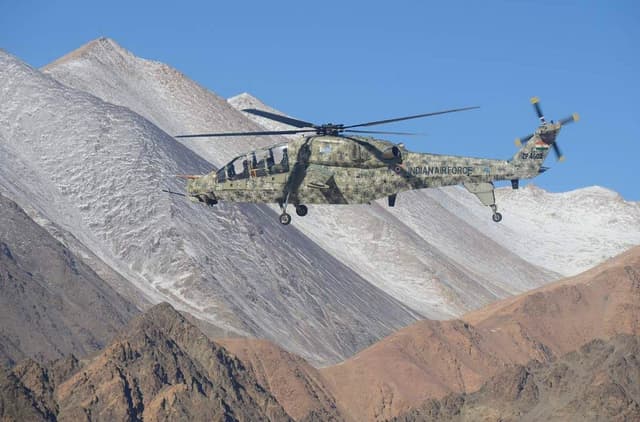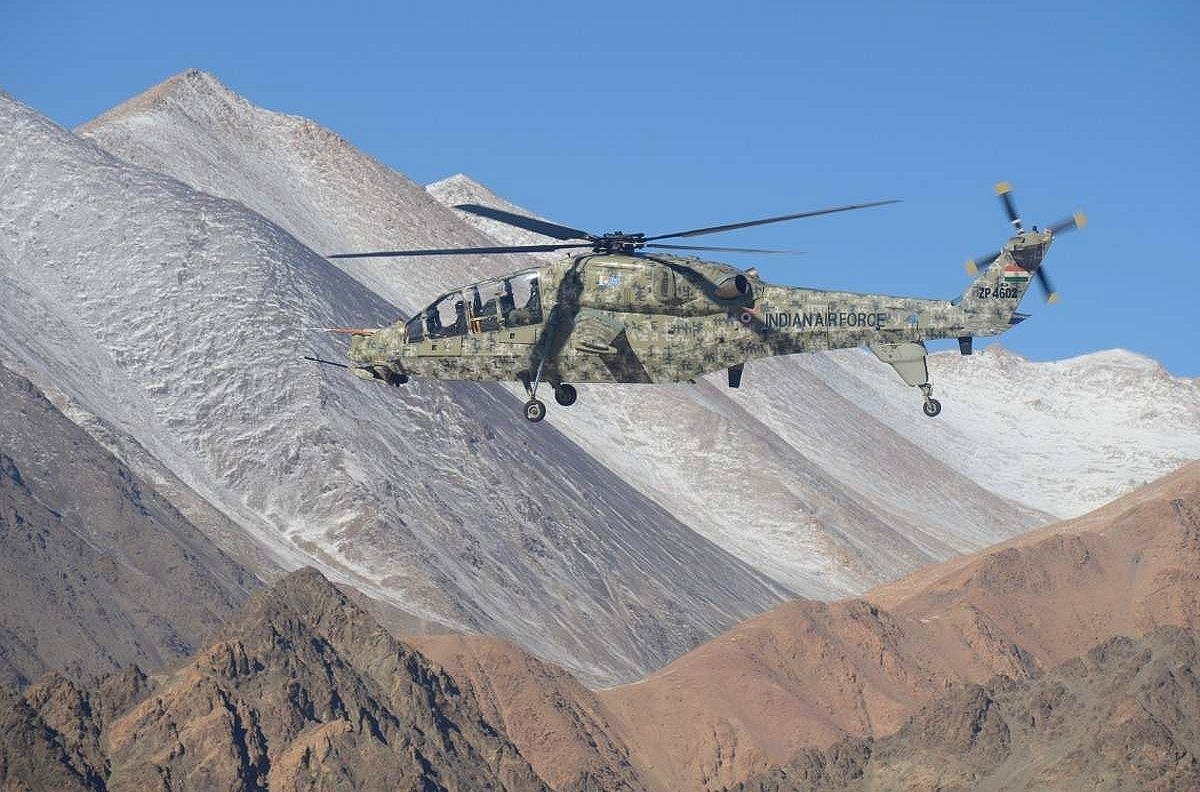WolfPack86
Senior Member
- Joined
- Oct 20, 2015
- Messages
- 10,507
- Likes
- 16,955
AMIDST CHINA CONFLICT, INDIA BUYS SPIKE, SPICE MISSILES FROM ISRAEL FOR OFFENSIVE CAPABILITY
New Delhi: India has bought a “small quantity” of the Israeli SPICE-2000 stand-off missiles and the Spike anti-tank guided missiles earlier this month to meet its immediate requirement, amidst a military face-off with China in the Ladakh border.
The quantity purchased of the two proven weapon systems was not immediately known, but two Indian defence officials with direct knowledge of the acquisition said it cost close to $200 million.
Israeli arms company Rafael Advanced Defence Systems Limited said yesterday in a statement that it was awarded the $200-million contract by “an Asian country” with SPICE-2000 air-to-surface systems, Spike ATGMs, tactical, electro-optically guided missiles, and advanced communication systems.
SPICE is a family of stand-off, autonomous, air-to-ground weapon systems that strike targets with pinpoint accuracy and at high attack volumes, independently of GPS navigation, based on autonomous electro-optic Scene-Matching Artificial Intelligence (AI) algorithms.
The SPICE family, operational and combat proven in the Israeli air force and other global users, consists of SPICE-250, SPICE-1000, and SPICE-2000 variants, with ranges of up to 100 km.
The Spike family consists of five variants (SR, MR, LR2, ER2, NLOS) of electro-optical, multi-purpose, multi-platform missiles, with ranges of up to 32 km and fire-and-update capabilities, the company said.
Till date, Spike has been sold to 35 countries, including 19 NATO nations, with over 33,000 missiles already supplied and more than 6,000 fired in tests and in combat. Spike missiles have been integrated onto 45 different vehicular, helicopter and naval platforms, it said.
The new contract includes Rafael’s Bnet system, a family of advanced Broadband IP MANET (Mobile Ad-hoc NETwork) Software Defined Radios for tactical operations, supporting the modern digital battlefield’s needs with high-speed, low delay, reliable connectivity for data, voice and video on-the-move.
India has twice deferred the purchase of Spike missiles in large quantities in recent years, following an assurance from Defence Research and Development Organisation that it will be able to deliver a weapon system to meet the army’s requirement in the next year or so.
Indian armed forces use all of these weapons systems and other equipment that have been purchased now, including the SPICE-2000, efficiently during the attack on terrorists training camps in Balakot in Pakistan in Feb. 2019 following the Pulwama terror strike in Jammu and Kashmir by Jaish-e-Mohammed, an outfit that gets safe-haven and training across its western borders.
Indian Army has been in a military conflict with China’s People’s Liberation Army along the Line of Actual Control in the Ladakh region since early May this year and the confrontation has not subsided despite eight round of military talks and several rounds of diplomatic parleys between the two nations, including one last week.
Rafael is a world-leading developer and manufacturer of advanced weapon systems. It provides forefront technological solutions that address the defensive and offensive requirements of the modern battlefield. Rafael is one of Israel’s top three defence companies, with approximately 8,000 employees and numerous subcontractors and service suppliers domestically and internationally.

 www.indiandefensenews.in
www.indiandefensenews.in
New Delhi: India has bought a “small quantity” of the Israeli SPICE-2000 stand-off missiles and the Spike anti-tank guided missiles earlier this month to meet its immediate requirement, amidst a military face-off with China in the Ladakh border.
The quantity purchased of the two proven weapon systems was not immediately known, but two Indian defence officials with direct knowledge of the acquisition said it cost close to $200 million.
Israeli arms company Rafael Advanced Defence Systems Limited said yesterday in a statement that it was awarded the $200-million contract by “an Asian country” with SPICE-2000 air-to-surface systems, Spike ATGMs, tactical, electro-optically guided missiles, and advanced communication systems.
SPICE is a family of stand-off, autonomous, air-to-ground weapon systems that strike targets with pinpoint accuracy and at high attack volumes, independently of GPS navigation, based on autonomous electro-optic Scene-Matching Artificial Intelligence (AI) algorithms.
The SPICE family, operational and combat proven in the Israeli air force and other global users, consists of SPICE-250, SPICE-1000, and SPICE-2000 variants, with ranges of up to 100 km.
The Spike family consists of five variants (SR, MR, LR2, ER2, NLOS) of electro-optical, multi-purpose, multi-platform missiles, with ranges of up to 32 km and fire-and-update capabilities, the company said.
Till date, Spike has been sold to 35 countries, including 19 NATO nations, with over 33,000 missiles already supplied and more than 6,000 fired in tests and in combat. Spike missiles have been integrated onto 45 different vehicular, helicopter and naval platforms, it said.
The new contract includes Rafael’s Bnet system, a family of advanced Broadband IP MANET (Mobile Ad-hoc NETwork) Software Defined Radios for tactical operations, supporting the modern digital battlefield’s needs with high-speed, low delay, reliable connectivity for data, voice and video on-the-move.
India has twice deferred the purchase of Spike missiles in large quantities in recent years, following an assurance from Defence Research and Development Organisation that it will be able to deliver a weapon system to meet the army’s requirement in the next year or so.
Indian armed forces use all of these weapons systems and other equipment that have been purchased now, including the SPICE-2000, efficiently during the attack on terrorists training camps in Balakot in Pakistan in Feb. 2019 following the Pulwama terror strike in Jammu and Kashmir by Jaish-e-Mohammed, an outfit that gets safe-haven and training across its western borders.
Indian Army has been in a military conflict with China’s People’s Liberation Army along the Line of Actual Control in the Ladakh region since early May this year and the confrontation has not subsided despite eight round of military talks and several rounds of diplomatic parleys between the two nations, including one last week.
Rafael is a world-leading developer and manufacturer of advanced weapon systems. It provides forefront technological solutions that address the defensive and offensive requirements of the modern battlefield. Rafael is one of Israel’s top three defence companies, with approximately 8,000 employees and numerous subcontractors and service suppliers domestically and internationally.

Amidst China Conflict, India Buys Spike, Spice Missiles From Israel For Offensive Capability
New Delhi: India has bought a “small quantity” of the Israeli SPICE-2000 stand-off missiles and the Spike anti-tank guided missiles earlier...









